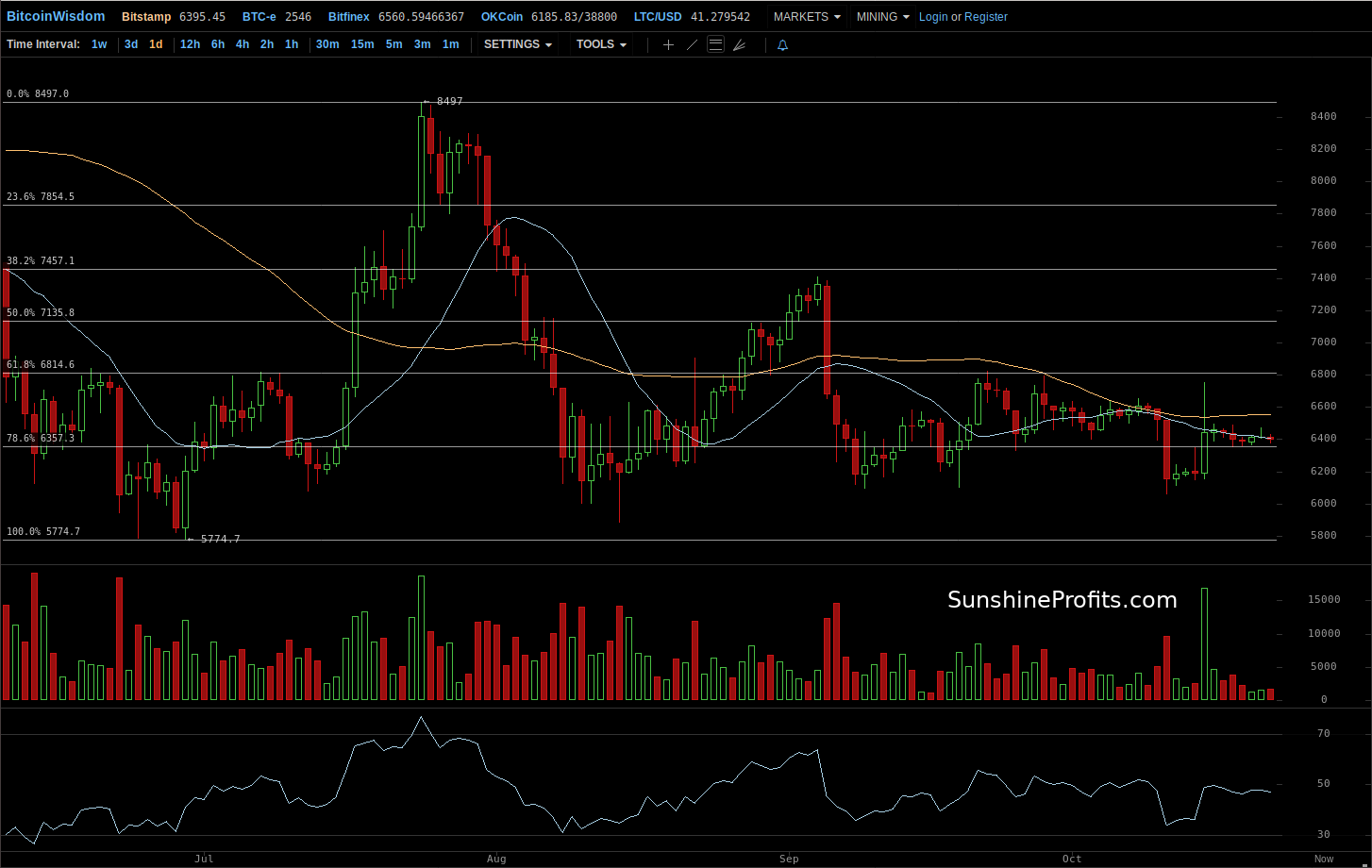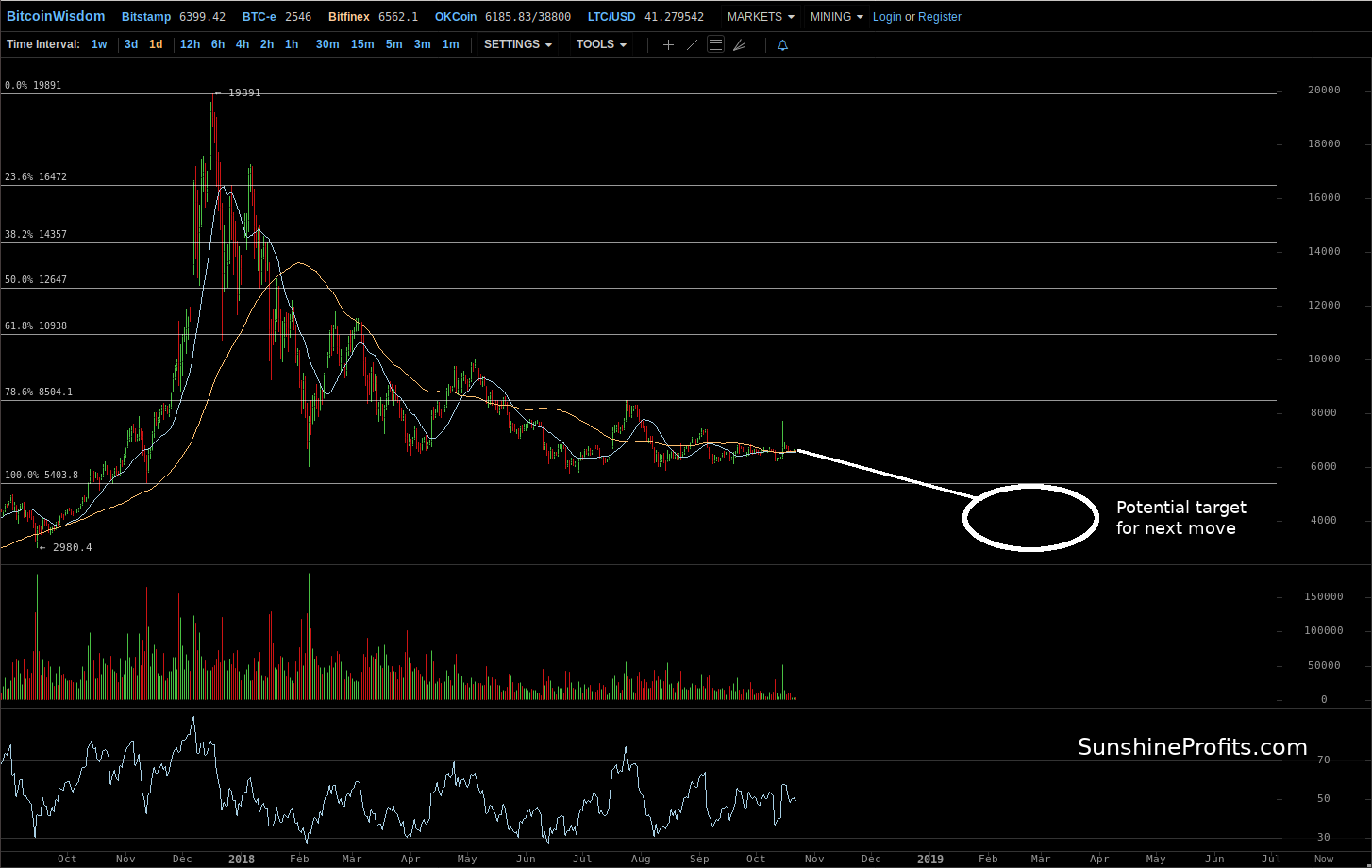A large asset manager has decided to offer Bitcoin trading to its institutional investors. Bitcoin shot up around the announcement but reversed course and erased most of the move up. The currency has stayed subdued since. This could mean that the market is getting boring. It could also mean that investors and traders are taking a breather before a more decisive move.
Traditional asset managers are not necessarily averse to Bitcoin. It turns out that Fidelity Investments, one of the largest asset managers in the world, is interested in providing hedge funds with access to the Bitcoin market. In an article on the Wall Street Journal website, we read:
Fidelity Investments said it will store and trade bitcoin for hedge funds and other professional investors, becoming one of the first Wall Street giants to step into this volatile corner of the financial world.
The new business Fidelity announced Monday, Fidelity Digital Asset Services LLC, will allow money managers, family offices and other institutional clients to trade bitcoin and ether, another digital currency. It intends to expand into additional assets in the future, said Tom Jessop, Fidelity’s head of corporate-business development.
The firm for now has no plans to extend the trading of bitcoin to retail customers, Mr. Jessop said. The business has about 100 employees, including dedicated client-services representatives, he said. It is currently setting up accounts for some new clients and will open more broadly early next year. Fidelity plans to execute trades through several digital-currency exchanges and platforms.
This is good news for institutional investors willing to trade in Bitcoin as the options to do so have so far been limited. On the surface, this doesn’t seem like that interesting for individual investors. But appearances can be deceptive. In particular, it might just be the case that the institutional interest in Bitcoin is considerable or at least considerable enough for substantial new funds to enter the market. We have seen some indications of that in the past. If this is true, then the launch of Bitcoin trading by Fidelity might pour new capital into the market and drive the prices higher.
There’s a caveat here, though. If all the Fidelity-related news is positive and new investors enter the market but Bitcoin doesn’t go higher, this would be a veiled bearish indication. Any time we see a bullish piece of news but the currency doesn’t react, we could potentially have a bearish sign on our hands. We have seen appreciation since the announcement but the next move in the currency is sort of hanging in the balance. The lack of further appreciation possibly tips the situation into bearish territory.
Bitcoin Still above Retracement
On BitStamp, we have seen Bitcoin drift with no significant swings to any side. The first thing one could get from such a market is that the volatility is down and that nothing interesting is going on. This would, in our opinion, be a superficial interpretation.

Bitcoin has stayed above the 78.6% Fibonacci retracement level based on the July rally. This could be construed as a bullish sign but, at the same time, Bitcoin is well below the 61.8% retracement and we are just after a failed attempt to move above this level. This is a bearish indication. And the bearish indication outweighs the bullish one as the 61.8% level would be the more important one and the failed attempt to move above it took place on exceptionally high volume when compared with recent history.
The recent lack of action confirms that the attempt at 61.8% potentially failed and Bitcoin could be open to more declines. The RSI still shows room for more depreciation. It should be noted, however, that we haven’t really seen an important bearish trigger for the very short term, so we are yet to see a sign of the move starting.
No Bearish Trigger Yet
On the long-term Bitfinex chart, we see that the currency is still trading at a premium on this specific exchange. This suggests caution in dealing with the signs that we might see on this exchange.

From a longer perspective, the recent action is barely visible. The last very visible point is the October 15 hectic move up. It is, however, quite clear from this chart that most of the move was reversed and that Bitcoin hasn’t moved to the levels of the recent top since. It all reads as a bearish piece of news.
The recent high is below the 78.6% Fibonacci retracement level, which also means that all the following action is well below this level. This means that, from a long-term perspective, the implications remain bearish. It looks like volatility is down but we have to remember that this was also the case before October 15 and yet we saw a very strong move. The recent lack of action does not, in our opinion, translate into the lack of interesting developments in the market. The lack of action to the upside following the recent top suggest that we might have seen a potentially bullish piece of news (Fidelity trading Bitcoin for institutional investors) denied quite rapidly. This would be a very bearish indication. What we should be looking out for are signs of a bearish trigger, for instance a move below the $6,000 level. We haven’t seen such bearish triggers yet.
Summing up, we are yet to see significant bearish triggers.
